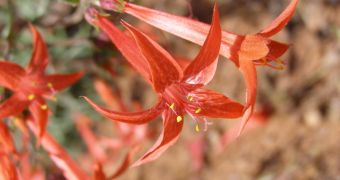Scientists with the US National Science Foundation (NSF) National Evolutionary Synthesis Center, in Durham, North Carolina, recently determined that human noises have a widespread, ripple effect on plants. Previously, this influence was thought to be limited only to animals.
Past studies have evidenced that birds and other creatures are very susceptible to experiencing considerable influence from noises such as those produced by vehicle traffic and the hum of industrial machinery. These correlations were never really studied in detail.
Now, researchers are suggesting that these noises may also have a ripple effect on plants. Indirectly, anthropogenic sounds change the way in which plants get pollinated, or spread their seeds. Numerous of the animals we influence play a significant role in their respective ecosystems.
In fact, every habitat is nothing more than a carefully-balanced ballet of species, interacting with each other for the greater good. Introducing foreign elements, such as artificial sounds, is the equivalent of introducing a new species, or a top predator – it throws everything off-balance.
Details of the investigation were published in the March 21 issue of the esteemed scientific journal Proceedings of the Royal Society B. The paper suggests that these ripple effects may last for decades, long after the source of the trouble has been eliminated.
This is especially true for long-lived vegetation, such as trees. The announcement was made in a statement by NESC investigator and lead study author, Clinton Francis. He explains that noisy areas appear to benefit the development of certain species, while impeding others from doing the same.
In a series of experiments conducted near noisy environments, the team determined that fewer seeds of piñon pines were being spread through the usual channels. Loud sounds were scaring off birds that usually moved seeds around. In the end, this translates into fewer pines growing in the noisy regions.
“Fewer seedlings in noisy areas might eventually mean fewer mature trees, but because piñon pines are so slow-growing the shift could have gone undetected for years. Fewer piñon pine trees would mean less critical habitat for the hundreds of species that depend on them for survival,” Francis concludes.

 14 DAY TRIAL //
14 DAY TRIAL //